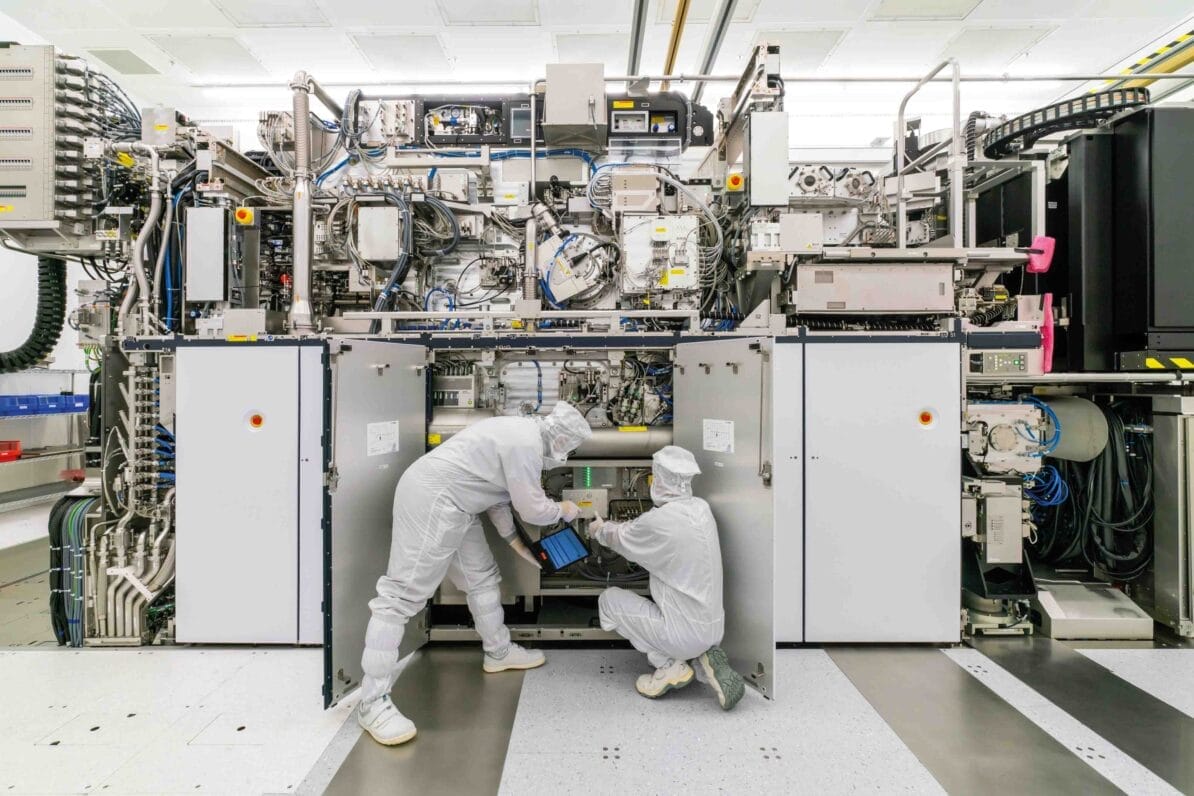DG #49 preview: How microchips are reshaping the world
A preview of our longform story on the geopolitical battle over microchips, from issue 49 of Delayed Gratification

Workers inspect a machine at microchip manufacturer ASML in the Netherlands. Photo: ASML
The new issue of Delayed Gratification features an article by editor Rob Orchard about the new standoff between the US and China over semiconductors, aka microchips. Here, our associate editor Matthew Lee asks Rob about why he gets so excited about chips.
Matthew Lee: What got you interested in microchips?
Rob Orchard: I visited ASML in the Netherlands (pictured above) a few years ago, where they produce the machines that make the world’s most advanced chips. It blew my mind. Their machines can print 114 billion transistors on a chip the size of your thumbnail – the sort of chip that powers the laptop that may be sitting in front of you right now.
ML: How do they do that?
RO: They use what’s known as extreme ultraviolet lithography. The lithography bit is straightforward – you shine a light through a design onto a silicon wafer coated in light-reactive material, and effectively cut the design onto it. The extreme ultraviolet bit is mad. That wavelength of light can’t be captured in a natural state anywhere in the world, it exists in the coronas around stars. In order to produce it here on Earth you have to take one of the strongest lasers available, which can cut through steel like butter, and shoot it at droplets of molten lead that are being expelled 50,000 droplets per second.
ML: What happens next?
RO: The laser hits each droplet twice. The first time it flattens it into a pancake, the second it explodes it into a plasma at 400,000 degrees Celsius, releasing some of this extreme ultraviolet light. You then need to channel that light using mirrors that are so flat that if you expanded one to be the size of Germany, the biggest bump on its surface would be less than a tenth of a millimetre.
ML: That feels like a lot of effort…
RO: Yes, but it’s worth it. These machines sell for $200 million each. There’s only one company in the world that makes them and only a handful of companies in the world that can afford to buy them. As soon as you take delivery of one of the machines, you then need to pump out chips on them around the clock, because within a couple of years time the technology will have moved on and that machine will no longer be state of the art.
ML: So why did you write the article about microchips now?
RO: Because something fascinating is going on in terms of geopolitics, which is that there is a huge concentration in the production of the most advanced microchips using ASML machines in Taiwan. As much as 90 percent of the world’s most advanced microchips are made there, which gives an extra dimension to the potential invasion of Taiwan by China and to the US’s stated intention to defend China against aggression.
In October 2022, the US imposed stringent export controls on microchip technology and microchip expertise to China, much to Beijing’s fury. This has huge economic implications, huge political implications – and also implications for the technology that will shape the next few decades, the personalised healthcare, the automation of transport systems. And then there’s defence – when we move into a world of automated killing machines reacting in real time without human intervention, the sophistication of their chips will have a direct effect on the outcome of battles. China, the EU and the US are all now pouring money into semiconductor research to try to gain an edge. It’s going to be a defining story of our times.
Slow Journalism in your inbox, plus infographics, offers and more: sign up for the free DG newsletter. Sign me up
Thanks for signing up.








